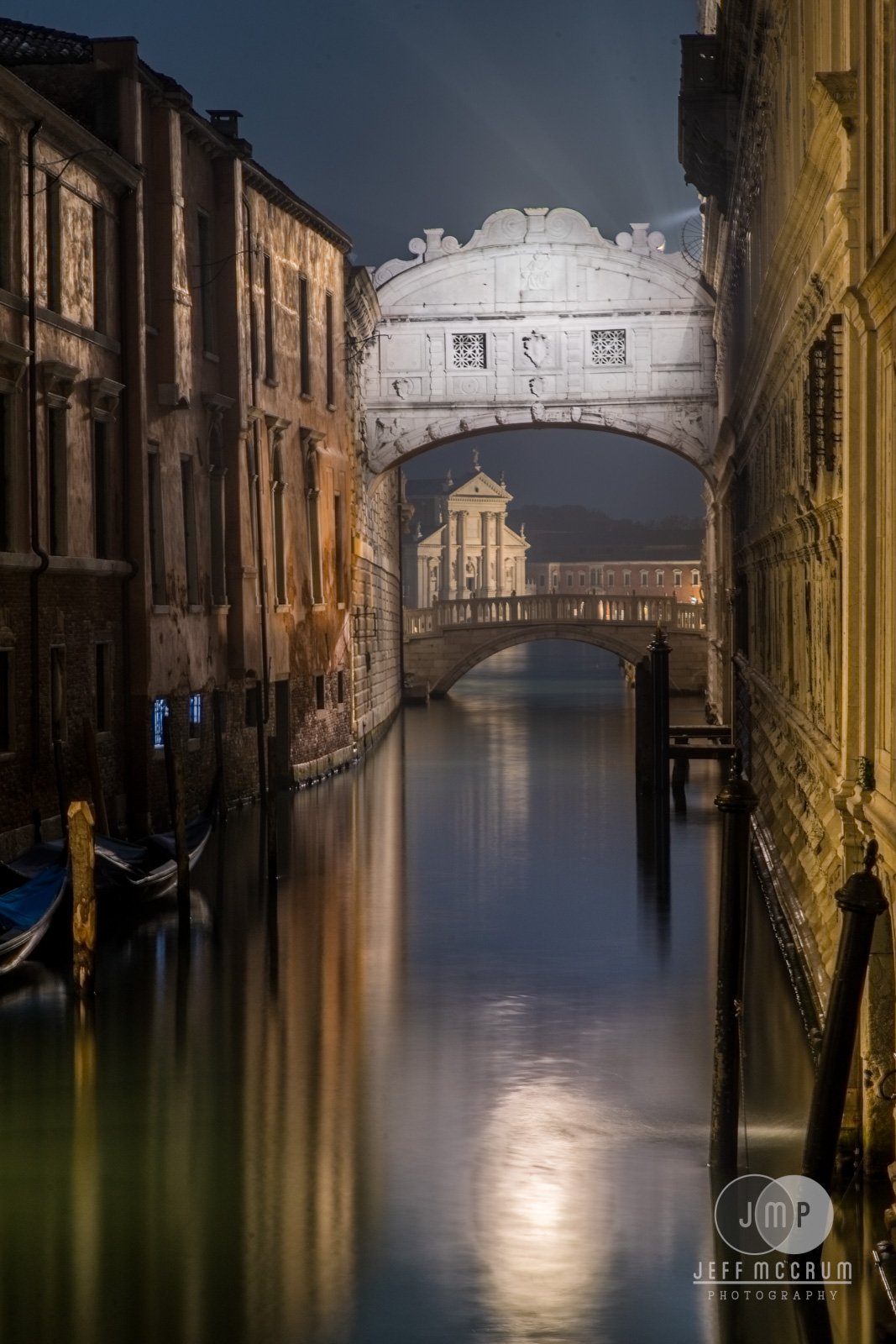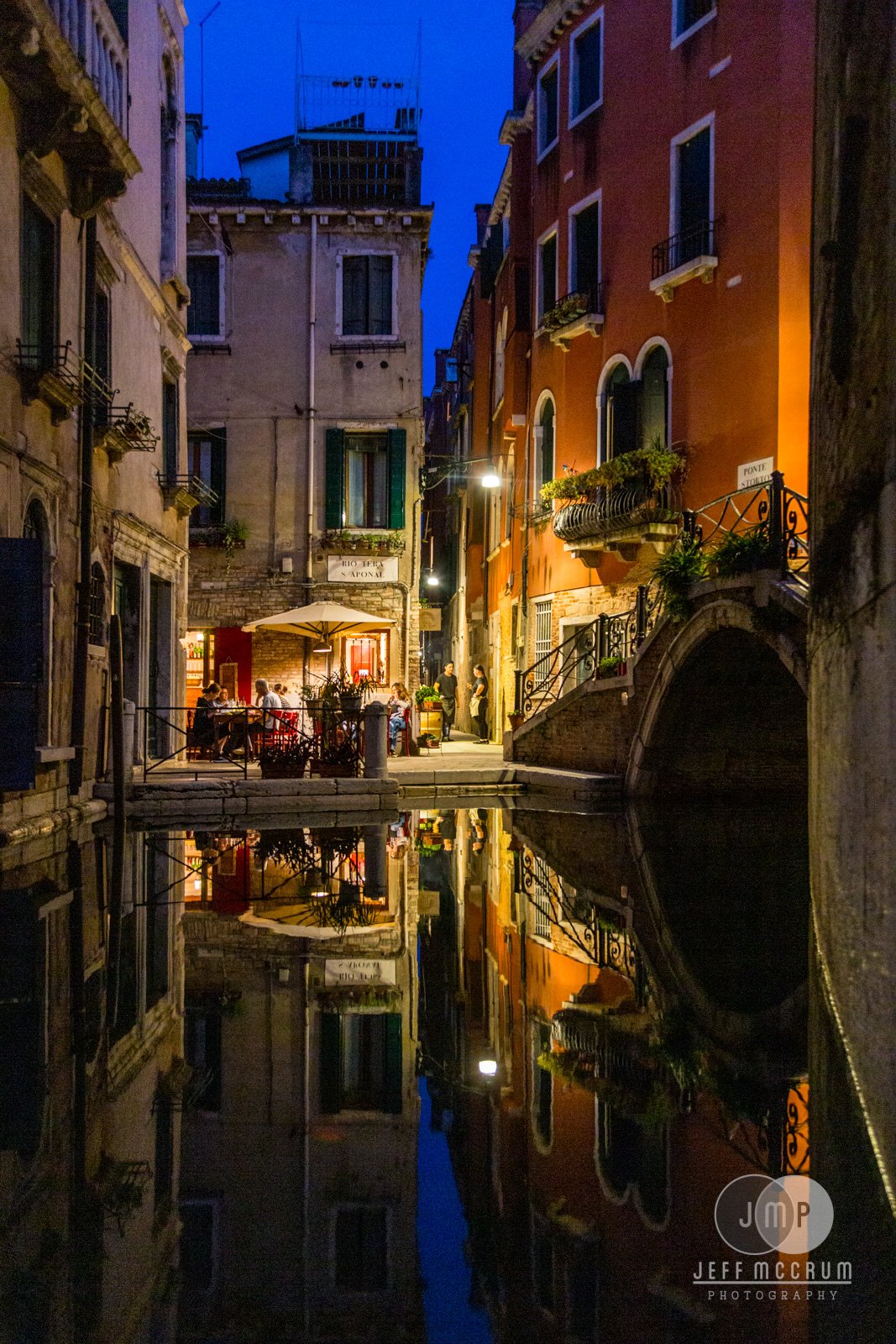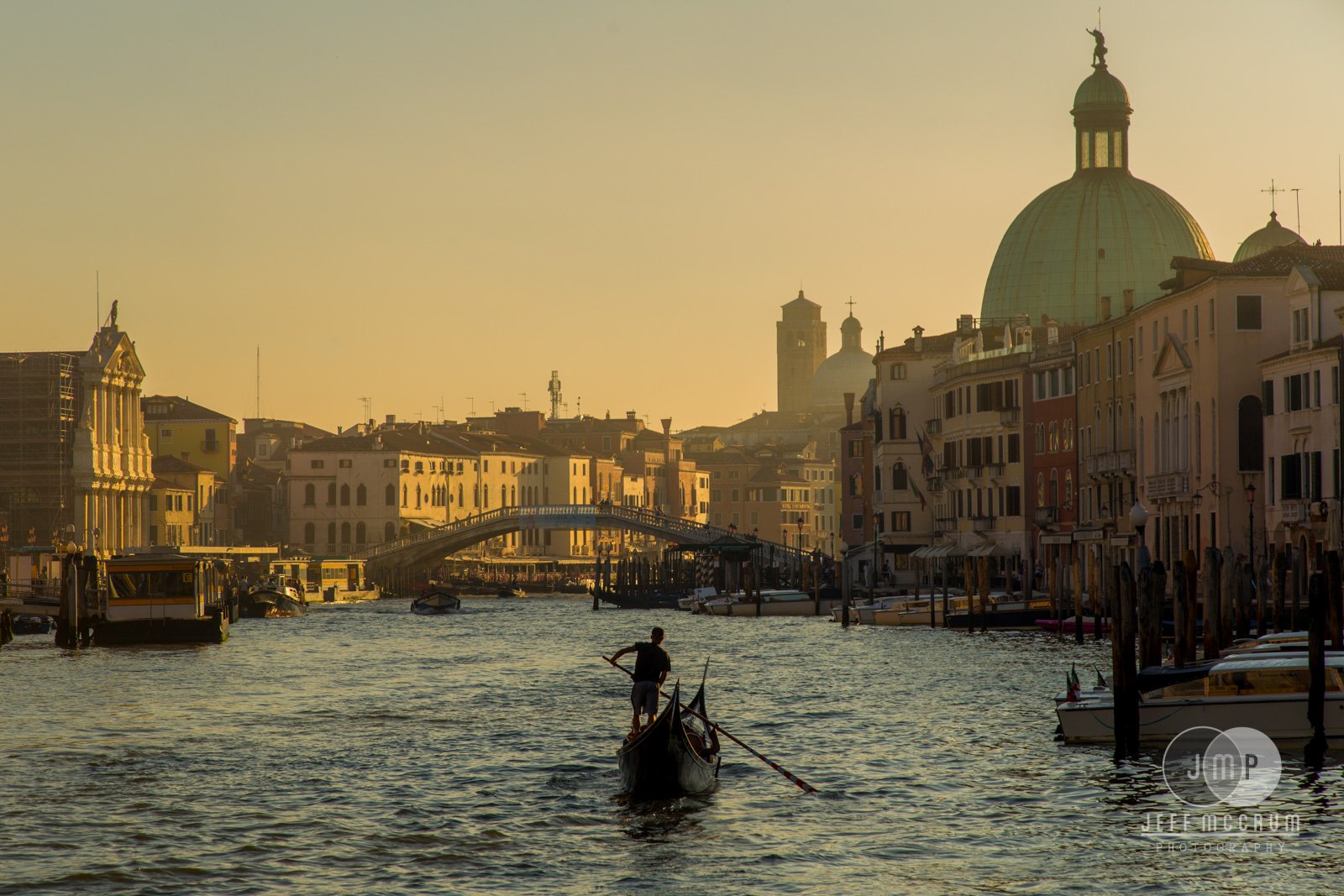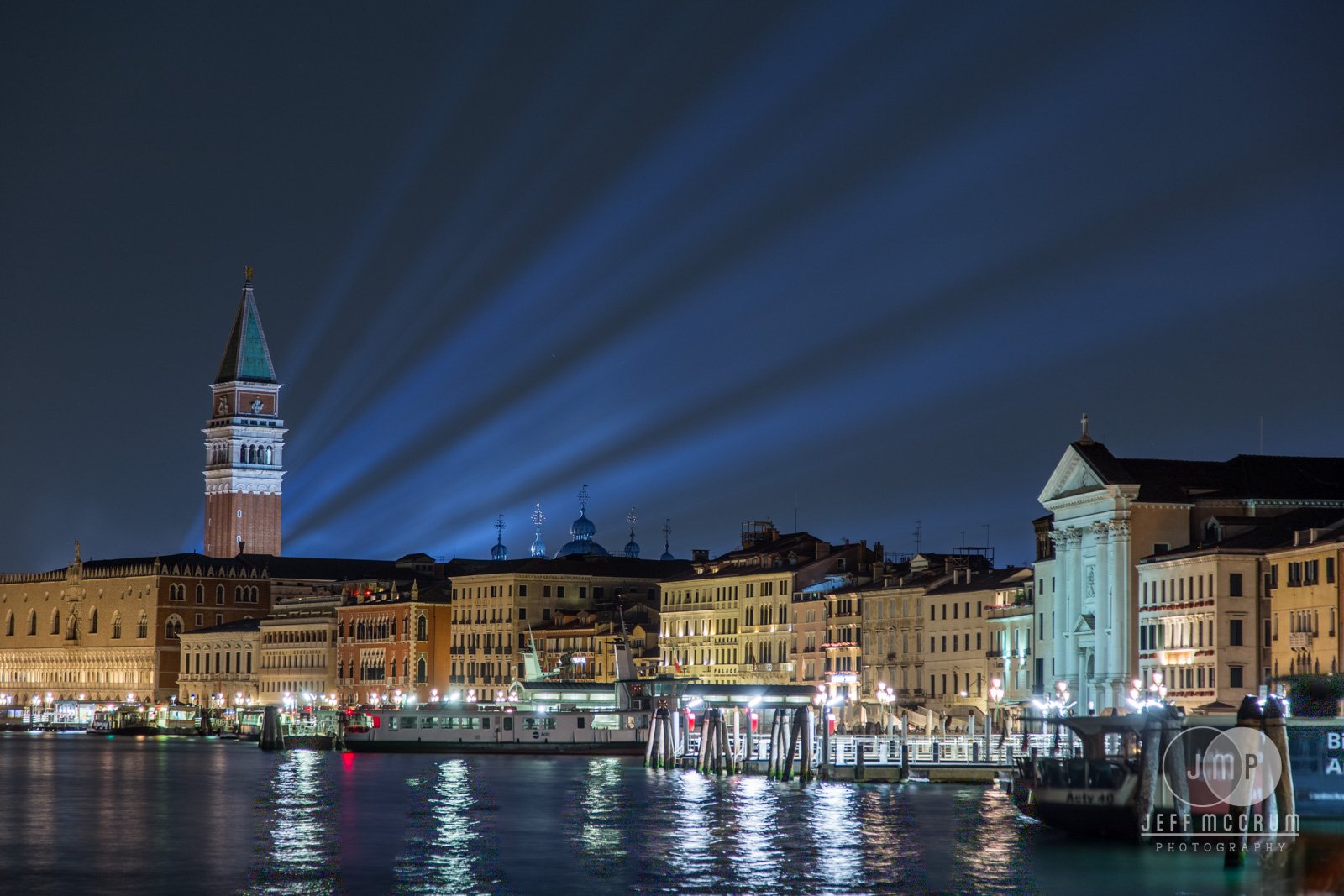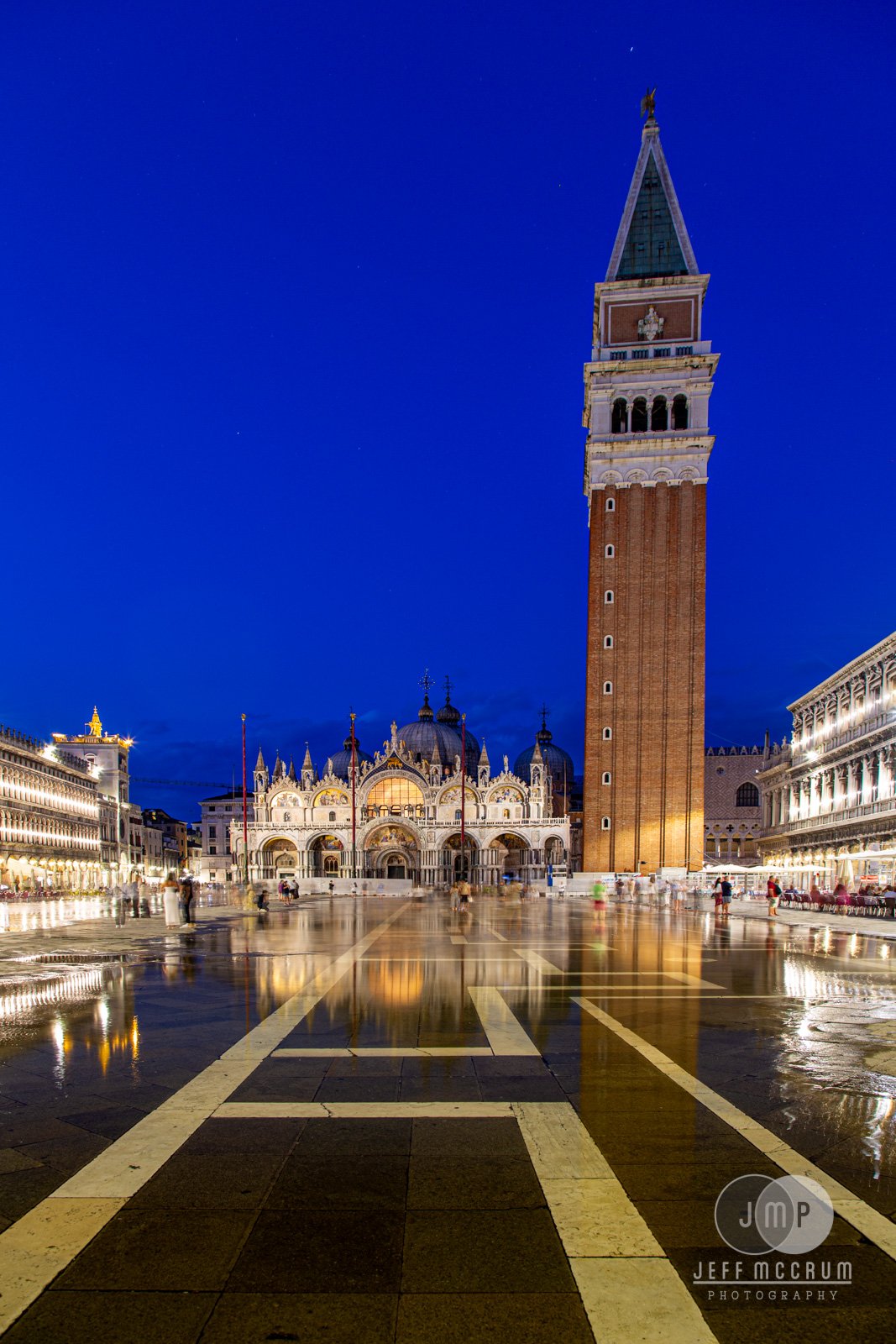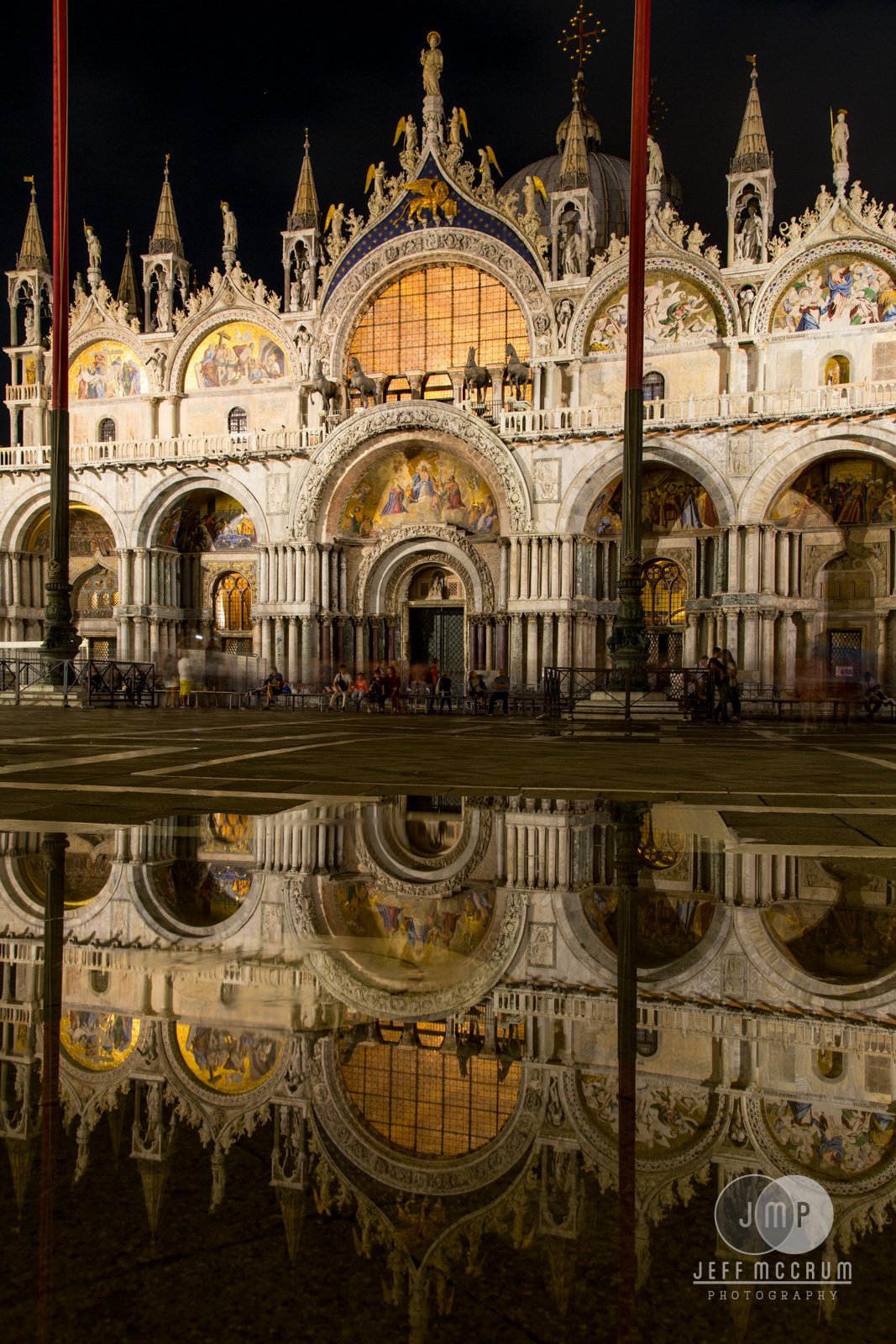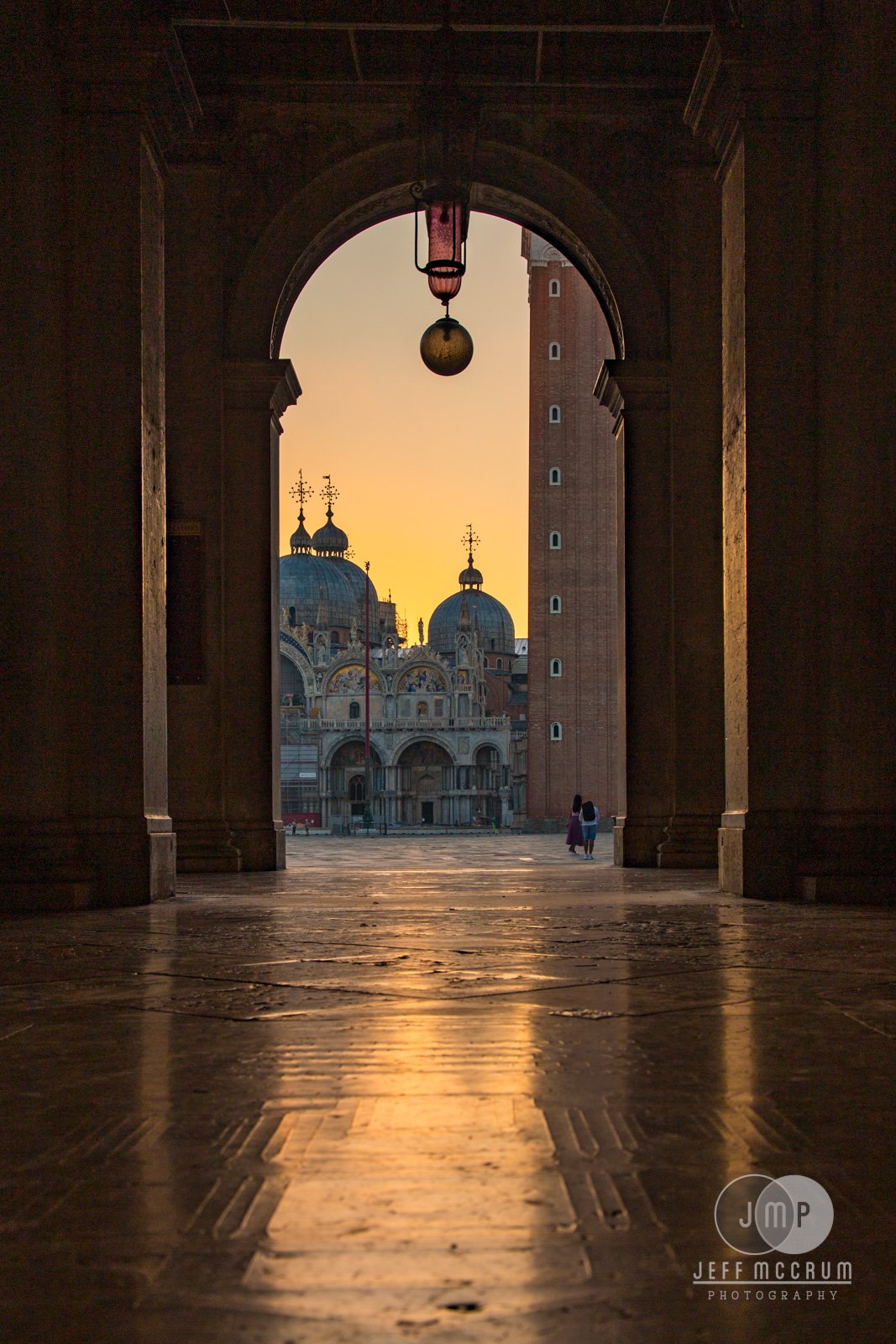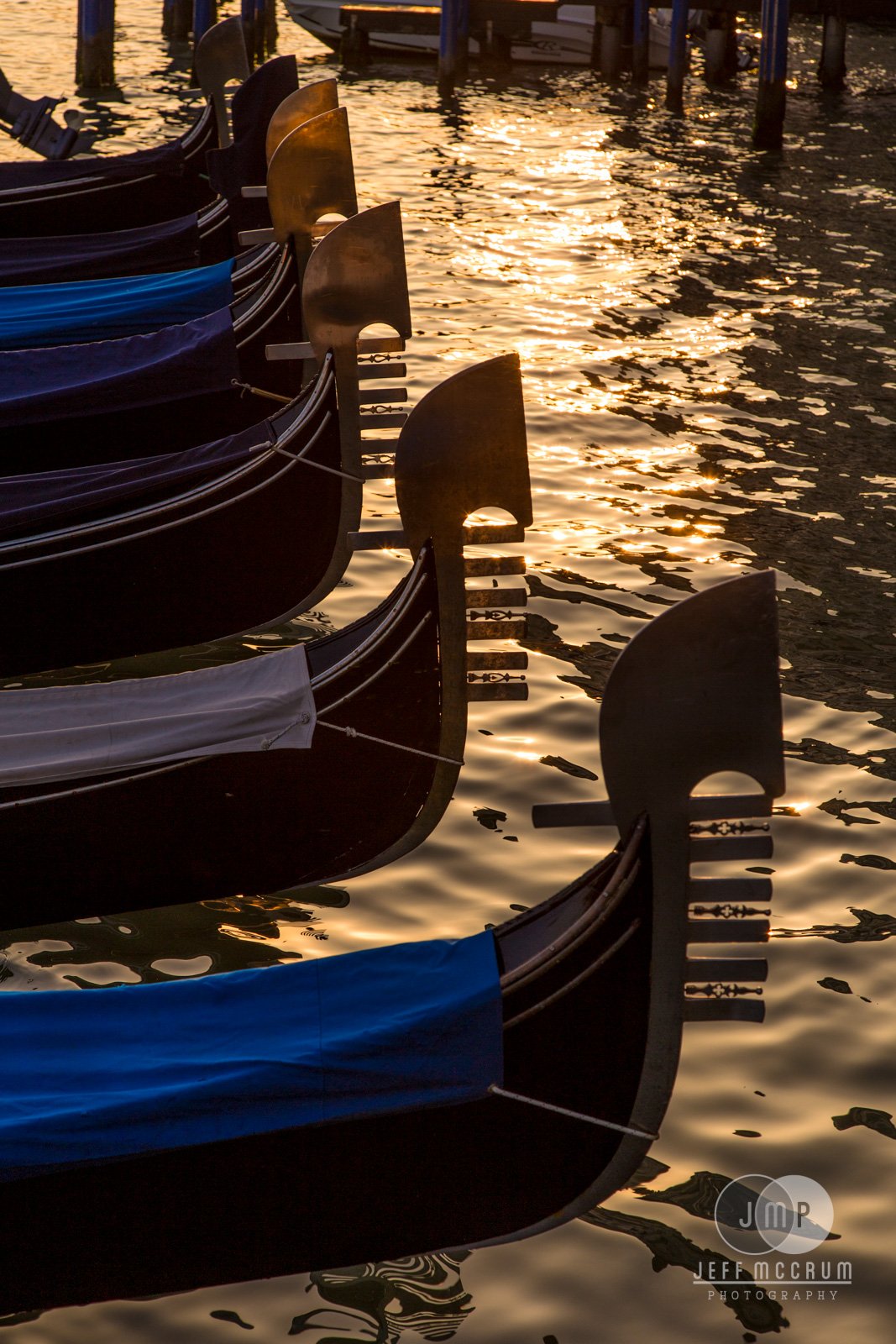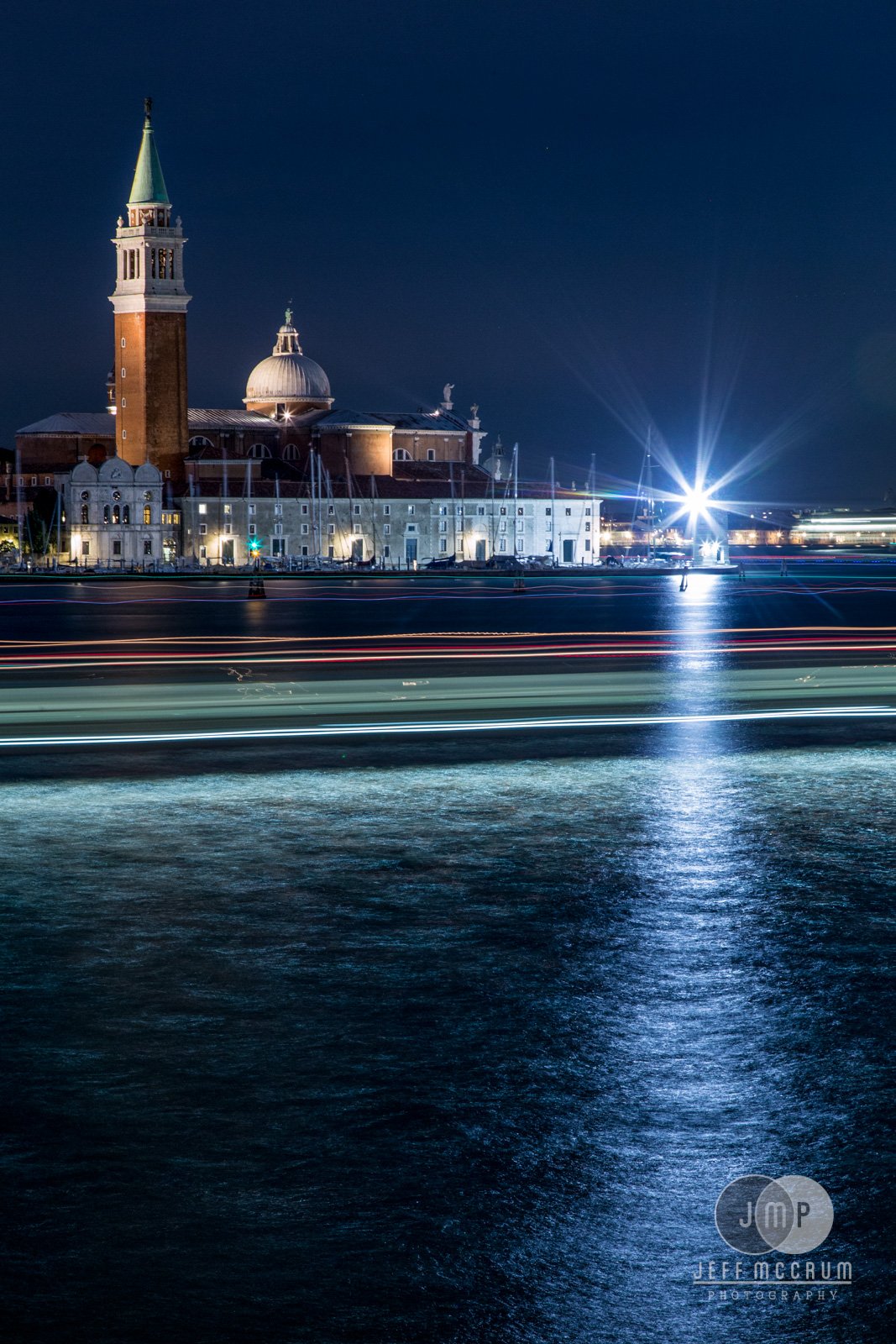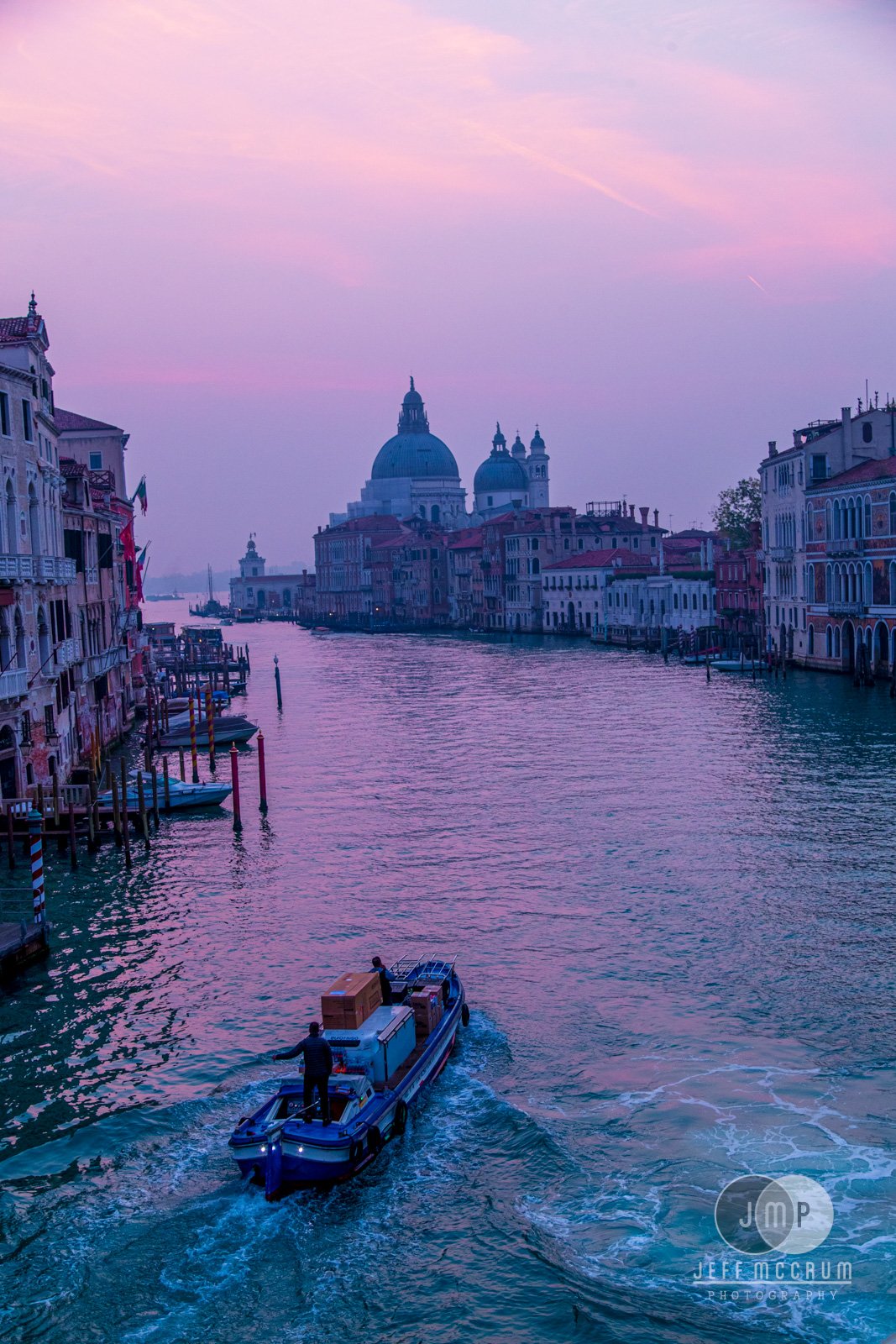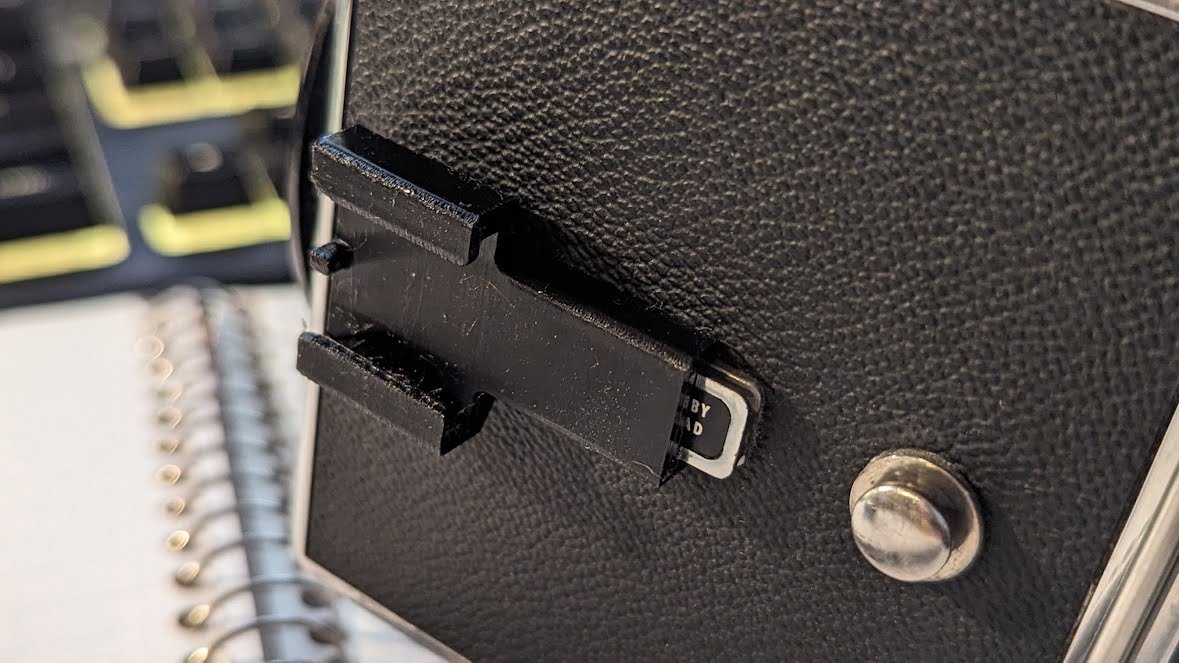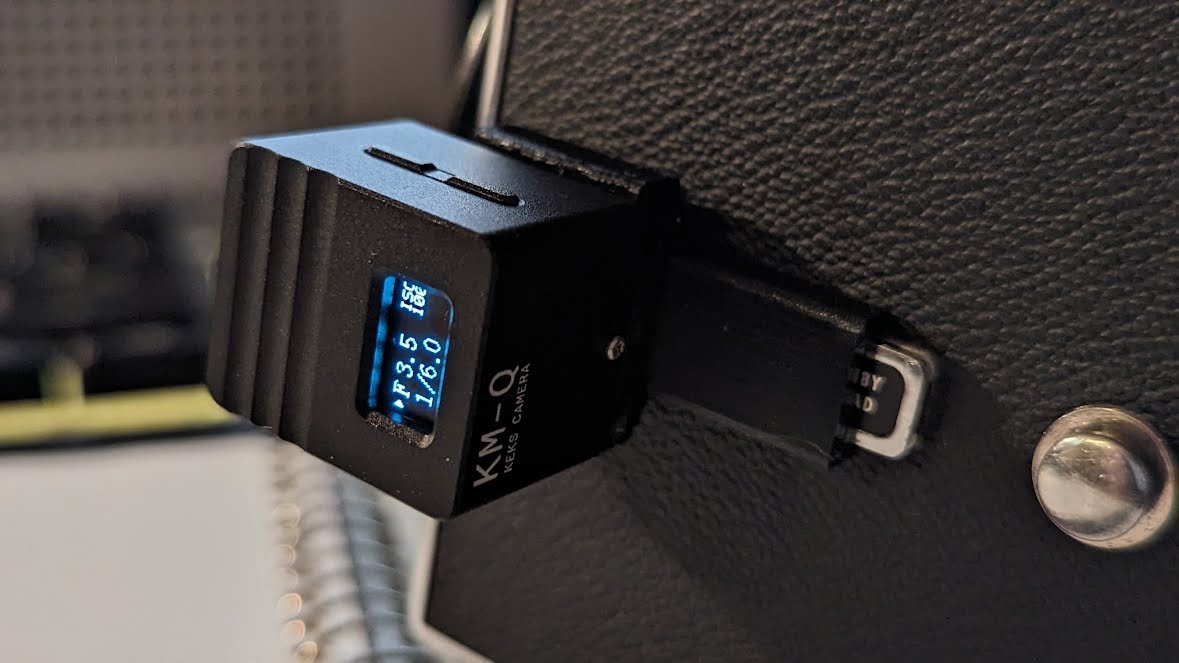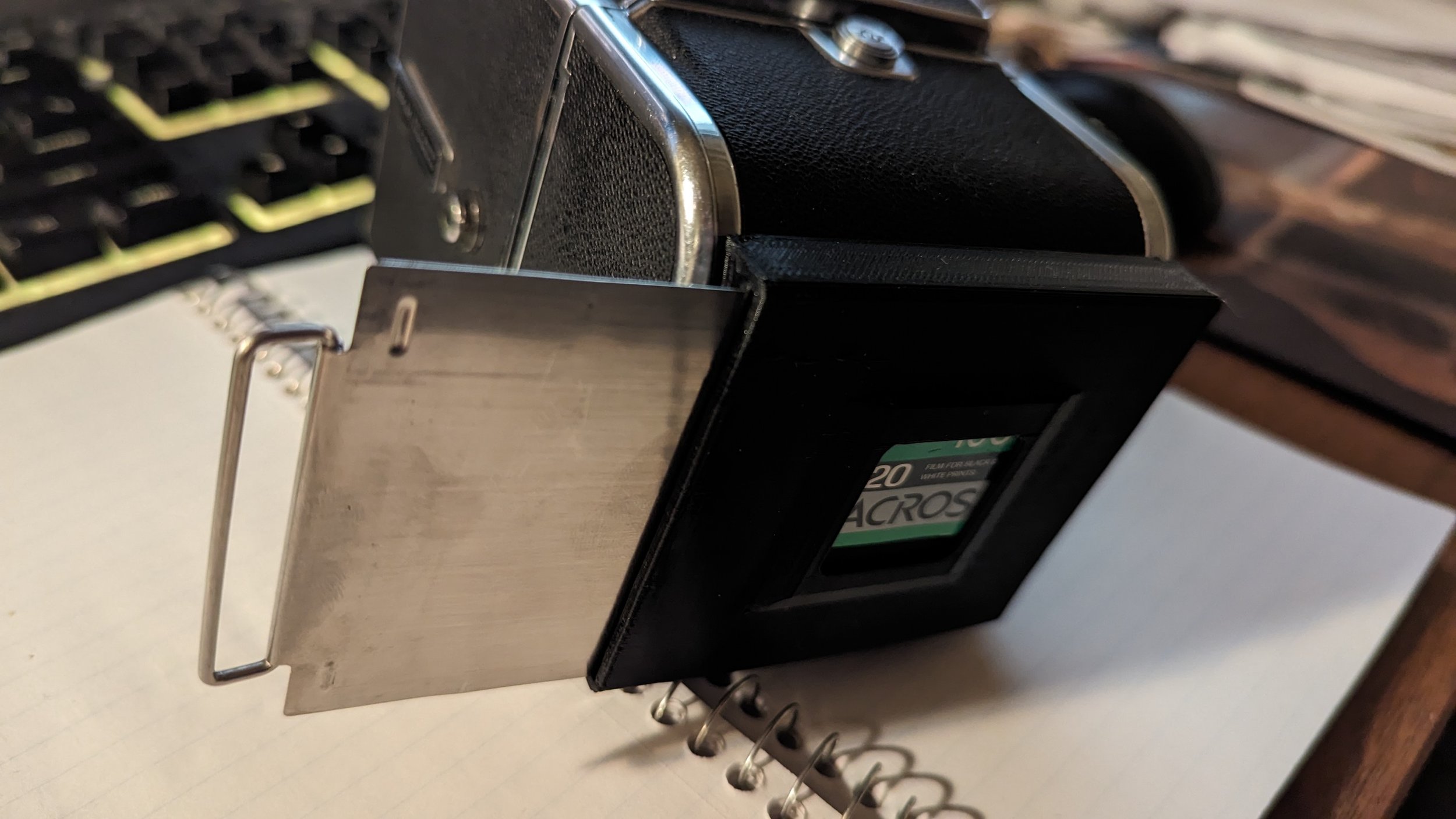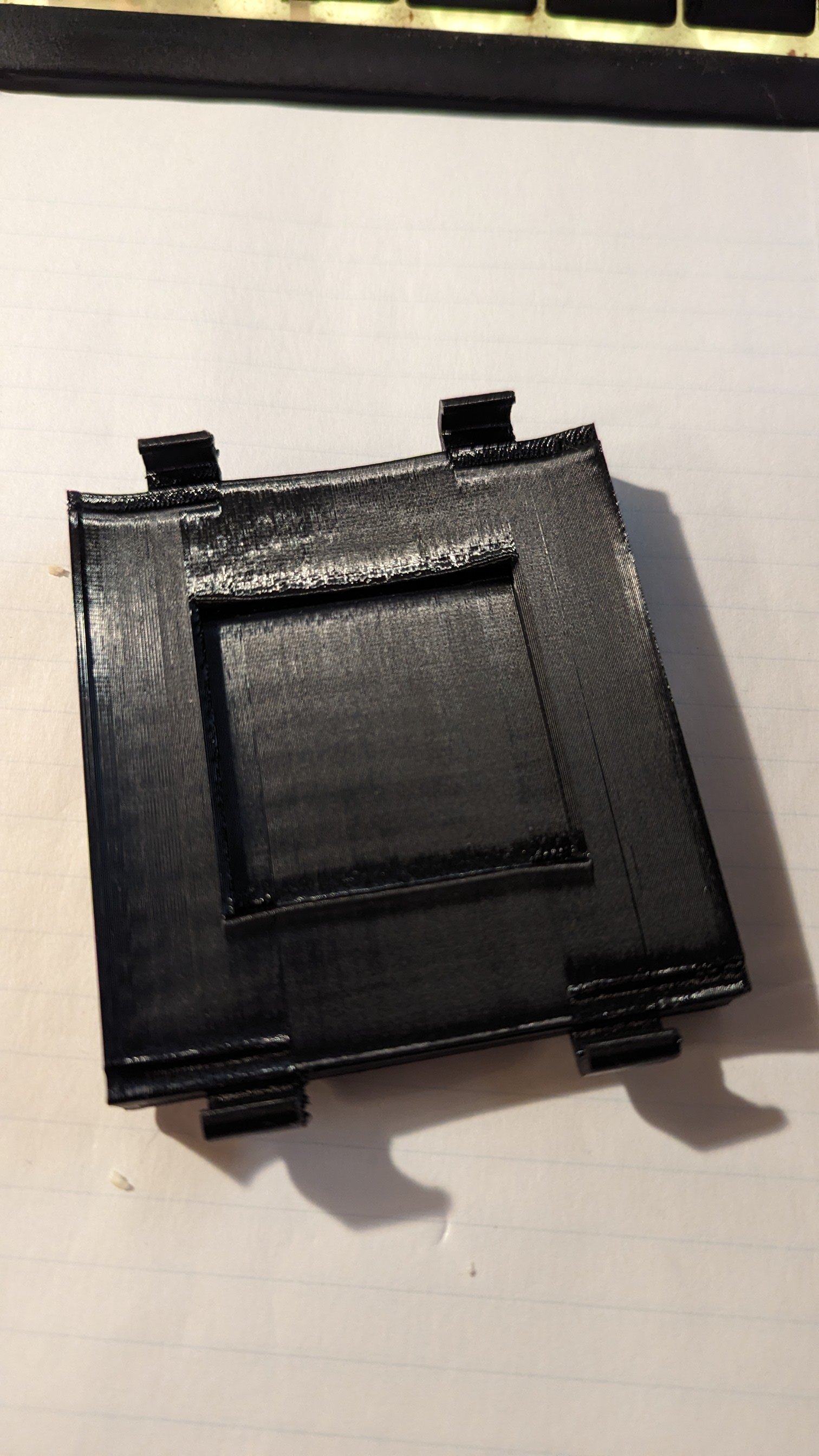Hosting a workshop in Venice
Venice always seemed to be one of the most foreign cities on Earth. No roads anywhere but streets made of water! And a Medieval city on top of it, with ancient buildings steeped in history. It seemed unreal when I read about it as a kid and when I had the opportunity to visit for a day in 2019 I leapt at it. Arriving by train across the lagoon I was like Katherine Hepburn in Summertime, looking out the window and wondering if I would like it.
Entering into the chaos of a June afternoon I was in awe. I had no working knowledge of Italian other than “bathroom,” “please,” and “thank you,” and no map other than my phone. But I also had my camera, a tripod, and a plan to take the second-to-last train back to Trieste at 9:30. Into the masses I waded, in awe of the variety of boats puttering along the Grand Canal. I found my way to the Rialto Bridge and Piazza San Marco by surreptitiously following tour groups led by someone with a flag or an umbrella. It was crowded and busy and, as it was early afternoon, fairly boring light from above, so I had an early dinner and anxiously waited for sunset to arrive.
I was in Piazza San Marco at the time when the square lost its direct sunlight, leaving the campanile and gold-topped Basilica alight; it was phenomenal and I suddenly realized the city was too large to try and capture it all in a day. I wandered around the San Marco neighborhood shooting the colorful canals, lit in the diffuse fading light, with the sky above a magnificent azure, reflecting in the water. The blue hour really worked well to be able to still see the tops of buildings and define those shapes.
As darkness fell the lanterns came to life revealing an entirely different version of the city: smaller, more intimate, pools of light creating incredible silhouettes of pedestrians moving through the space. Well-lit restaurants with diners and light spilling into the sidewalks while the waterways reflected long lines across the images. Smaller canals had gondolas leaving light trails meandering through the inky canals created mystery to long exposures.
Every shot was fascinating and I felt my scheduled train departure creeping closer and closer. At 9:30 I found myself deep in the middle of the Cannaregio, 20 minutes from the train station and now well aware I had to make the 10:30 train unless I wanted to sleep on the sidewalk until 5 AM. I slowly wandered back towards the train station with more purpose now, anxious about taking a wrong turn to a dead end alley. But those dead ends! Even they led to such interesting locations, sill canals framed by flower pots or laundry forgotten on the line overnight.
In the end I still had to hustle for the train, picking up my bag of clothing from luggage storage and slumping into a seat with about eight other people in the car. It was a quiet ride and I spent most of it reviewing images. My trip to Venice had been a magical unreal day and I wished that it had been even longer. I have been lucky enough to come back time and again over the past five years and decided to help others create their own magical memories by creating a workshop to lead others through the city, you can find out more about it here.
3D printing and photography
3D printing and film photography
When I first heard about 3D printing I asked my friend Dave at a makerspace what they could really be used for. “They’re a hammer for every nail out there,” was the answer and it didn’t make much sense. It turns out that what Dave meant is that you need to review what your actual problems are because 3D printing can solve a vast majority of them you just need to consider what your actual problems are.
I still enjoy film photography, it’s slow, methodical, very limited with the shot quantity, and, in my case, monochromatic. The limits are what I like about it, being forced to really think about that composition and if it’s worth 1/12th of what I want to record that day. Quite the opposite from cards that hold gigabytes. One thing I had gotten over the holidays was a small Keks light meter, as hauling around a meter that is the size of my folding Agfa Isolette III is kind of ridiculous. So having a smaller option that slid into the cold shoe was a delight.
However, I looked over at my Hasselblad 500 and really wanted to find a way to attach the Keks to the Hassy, unfortunately for me the Hasselblad’s small rail would require a fairly expensive cold shoe solution. To add to the complexity the width of the cold shoe on the Hasselblad was larger than the one for the Agfa. So, checking the typical 3D printing file locations I found a good start to a printable rail onto the Hasselblad that I could modify to perfectly fit the Keks.
44 minutes later I had the solution in my hand and everything slid in perfectly to save me a lot of time, money and space in my bag.
Another solution to a problem that I found during this was with the Hasselblad’s dark slide. It slips into the film magazine and prevents the shutter from triggering until it’s removed. Whenever I’m out shooting I take it out and never know what to do with it, I’ll slip it into a pocket and forget about it untl it’s accidentally bent. So, delving back into a 3D drawing program called Sketchup I modified another design to clip snugly onto the back of the camera. Now the dark slide comes out, goes into the slot two inches back and reminds me that it has to go back where it came from.
So if you can’t figure out a solution to an annoyance you have with your camera gear contact me and we’ll talk over some ideas, there’s a very good chance there’s a solution that can be had in a much shorter time than you would think.


